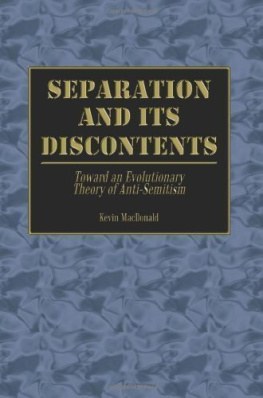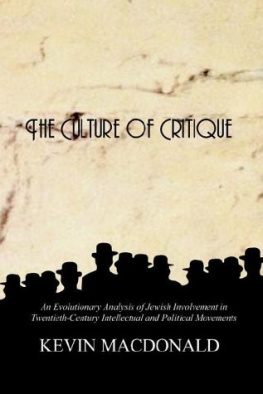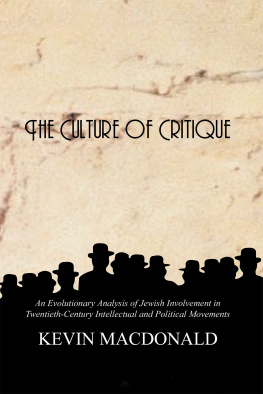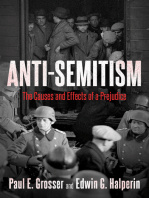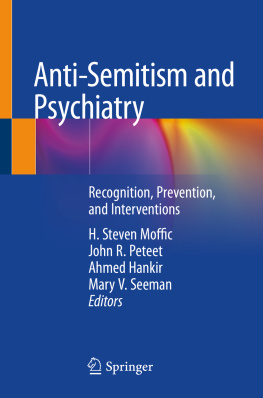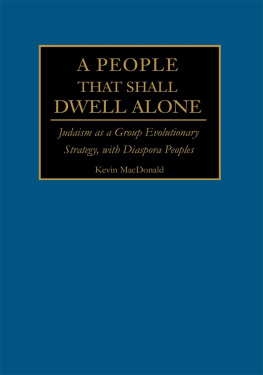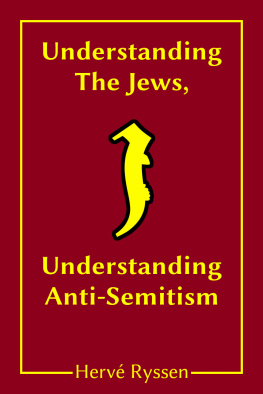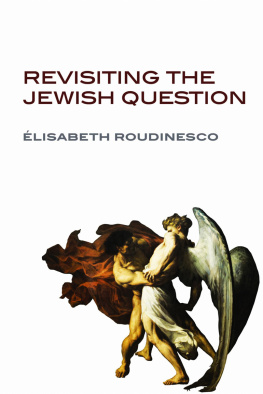Separation and Its Discontents
Toward an Evolutionary Theory of Anti-Semitism
by
Kevin B. MacDonald
2004

~ All Your Books Are Belong to Us !!! ~
http://inclibuql666c5c4.onion
Separation and Its Discontents
Toward an Evolutionary Theory of Anti-Semitism
Copyright 2004 Kevin B. MacDonald
Published by 1st Books (2004)
Language: English
ISBN: 1-4107-9260-9 (ebook)
ISBN: 1-4107-9261-7 (ppbk)
Originally published by Praeger Publishers (Jan. 26th, 1998)
AuthorHouse (Nov. 13th, 2003)
MacDonald develops a theory of anti-Semitism based on an evolutionary interpretation of social identity theory--a major approach to group conflict in contemporary social psychology. Beginning in the ancient world, anti-Semitism has existed under a variety of religious and political regimes. MacDonald explores several theoretically important common themes of anti-Semitic writings such as Jewish clannishness and cultural separatism, economic and cultural domination of gentiles, and the issue of loyalty to the wider society.
Particular attention is paid to three major manifestations of Western anti-Semitism: the development of institutionalized anti-Semitism in the Roman Empire, the Iberian Inquisitions, and the phenomenon of Nazism. All of these movements exhibited a powerful gentile group cohesion in opposition to Judaism as a group strategy, and MacDonald argues that each may be analyzed as a reaction to the presence of Judaism as a highly successful group evolutionary strategy. Because of the repeated occurrence of anti-Semitism, Jews have developed a highly flexible array of strategies to minimize its effects. These include: crypsis during periods of persecution, controls on Jewish behavior likely to lead to anti-Semitism, and the manipulation of gentile attitudes toward Jews. This controversial work challenges prevailing views. Students and scholars involved with evolutionary approaches to human behavior and Jewish Studies will be interested, as will social scientists and historians in general.
Contents
[]
A writer in the Toronto Globe and Mail (May 11, 1993) comments on the incredible sense of commonality he has with other Jews and his ability to recognize other Jews in public places, a talent he says he has heard called J-dar. While dining with his prospective gentile wife, he is immediately recognized as Jewish by some other Jews, and there is an immediate bond of brotherhood between them that excludes his gentile companion.
[]
I am greatly indebted to David Dowell, Department of Psychology, California State University-Long Beach, for introducing me to social identity theory as a theoretical approach for understanding group conflict.
[]
For example, in the case of traditional shtetl Jews in Poland in the early 20th century, the self-concept that Jews did not engage in physical labor was so strongly held that even starving Jews would refuse to engage in such labor. The prominent Zionist Arthur Ruppin (1971, 70) recounts an incident in which he observed a Christian chopping wood for a Jew. When the Jew was asked why he did not employ one of the many unemployed Jews in the area, he replied that A Jew does not undertake such work, even when he is starving; it is not suitable for a Jew. Jewish avoidance of physical labor has often been commented on by gentiles, often with antiSemitic overtones. The American sociologist Edward A. Ross (1914, 146) wrote that the Hebrew immigrants rarely lay hand to basic production. In tilling the soil, in food growing, in extracting minerals, in building, construction and transportation they have little part. Sometimes they direct these operations, often they finance them, but even in direst poverty they contrive to avoid hard muscular labor.
[]
Attitudes of mutual hostility have been common throughout Jewish history. There are numerous examples of mutual hostility and contempt between Greeks and Jews and, later, between Christians and Jews in the Roman Empire in both Jewish and Christian sources (see Ch. 2 and 3). There was a general tendency for Jews to reciprocate attitudes of hostility and contempt toward gentiles in pre-Enlightenment Europe, and attitudes of superiority were particularly characteristic of the Sephardim (Patai 1977, 380ff). This Jewish belief in their own superiority has often aroused hatred among gentiles. The 15th-century anti-Semitic chronicler Andrs Bernldez stated that They [Jews and New Christians] had the presumption of arrogance; [they thought] that in all the world there were no people who were better, or more prudent, or shrewder, or more distinguished than they because they were of the lineage and condition of Israel (in Castro 1971, 71).
[]
In the Acts of the Apostles 10:28, Peter says ye know how that it is an unlawful thing for a man that is a Jew to keep company, or come unto one of another nation; but God hath showed me that I should not call any man common or unclean (in Alon 1977, 154).
[]
The authoritative 12th-century Code of Maimonides, Book X, TheBook of Cleanness summarizes a vast body of the law of cleanness in which a wide variety of very minimal contacts with gentiles and things associated with gentiles brings uncleanness. For purposes of uncleanness, male gentiles over nine years of age and female gentiles over three years of age are considered in every respect as men who suffer a flux [i.e., a discharge from the penis] (p. 9; see also especially p. 213). Such a person is a Father of Uncleanness and hence capable of rendering persons, utensils, and garments unclean by contact (p. 25). Regarding men with a flux, they render utensils unclean by contact; they render unclean the couch, seat, or saddle beneath them, making this also a Father of Uncleanness; and they convey maddaf uncleanness to what is borne above them (p. 207). ( Maddaf uncleanness refers to uncleanness of objects borne above a person with flux in which the uncleanness is conveyed to the foodstuffs and liquids inside the utensil.) Their spittle, urine, and semen are unclean, and any man who has intercourse with a gentile female is rendered unclean. Gentiles therefore are viewed as contaminating these objects so that any Israelite who contacts these objects is rendered unclean. Gentiles are said not to be able to contract corpse uncleanness, the reason being that it [the gentile] is like a beast which touches a corpse or overshadows it. And this applies not to corpse uncleanness only but to any other kind of uncleanness: neither Gentiles nor cattle are susceptible to any uncleanness (p. 9). A further indication of the low status of gentiles is that if thieves enter a house, only the areas trodden by the feet of the thieves are unclean, but if a gentile is with them, the entire house is unclean (pp. 246247). Thus even Israelite thieves impart less uncleanness than gentiles. Gentile land is also unclean, as is the airspace over gentile land, so that as soon as anyone brought his head and the greater part of himself into the airspace of a heathen land he became unclean (p. 43). Moreover, land in Israel where gentiles have lived also is unclean, because there is a fear that they might have buried their abortions there.
[]
A Viennese guidebook during the early 20th century stated that the first question one asks when seeing someone on the street was, Is he a Jew? (Gilman 1993, 44). This comment reflects the extreme salience of group membership during this period of ethnic conflict.
[]
In PTSDA (Chapter 4), it was suggested that an important aspect of Jewish religious writings in the ancient world, as well as among some modern apologists, has been to foster the idea that Judaism has been and continues to be highly permeable. The data summarized there and in Chapters 6 and 9 of this volume are highly compatible with the proposition that Judaism has at times presented itself as permeable, thereby mitigating anti-Semitism, while in practice retaining powerful sanctions against crossing group boundaries. See Chapter 9 for a discussion of the permeability of contemporary Judaism.

